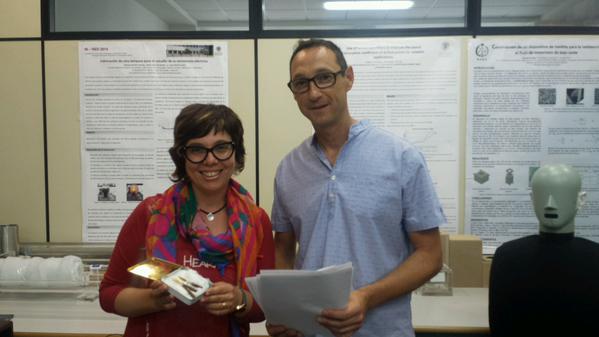Researchers at the Gandia Campus of the Polytechnic University of Valencia, Jesús Alba and Romina del Rey, are conducting a research project titled “Study of the Durability of Oboe Reeds According to Sound Quality Parameters”, which aims to analyze the performance, quality and duration of oboe reeds. Also participating in the studyhe is the doctoral students Juan Pedro Romero, co-principal oboe of the Symphonic Orchestra of Asturias (OSPA).
To carry out the investigation, a hearing survey was conducted for all audiences to subjectively assess their opinions about the sound of several oboe reeds, one of them from Valencia. According to the researcher Jesús Alba, “with this survey we can even compare the quality of our native reeds agianst other more commercial ones.” He highlighted the importance of the participation of the general public in this phase, a key element since part of the research focuses on the emerging field of Citizen Science. The survey is currently no longer open to participation as it is now in the process of data collection.
How oboe reeds are made It is common practice for professional oboe players to make their own oboe reeds, seeking the best quality of sound for their performances. “The raw material used for their manufacture requires a long process,” says Jesus Alba. “First, they have to gather two-year-old reeds from river beds with the waning moon when the cane sap is in the best condition. After they have been gathered, they to dry for another two years under specific temperature and humidity conditions… The reeds are then cut into “splits” which are transformed into reed blanks used to make the mouthpieces by hand. “Of all the reeds hand made by each professional oboist,” says Jesús Alba, “only a small percentage of them are considered good enough for performances, since they only preserve their optimal conditions for about 10-20 hours (depending on the use and weather conditions).”
To analyze the performance, quality and duration of oboe reeds, they will take into account the different reed-making techniques, their effect on sound playback, both objectively and subjectively, the effect of the conditions during playback (humidity, temperature, effect of saliva, and others) and the effect and influence of the room where it is being played.
You can listen to the interview with Jesus Alba on Onda Cero Gandia:












